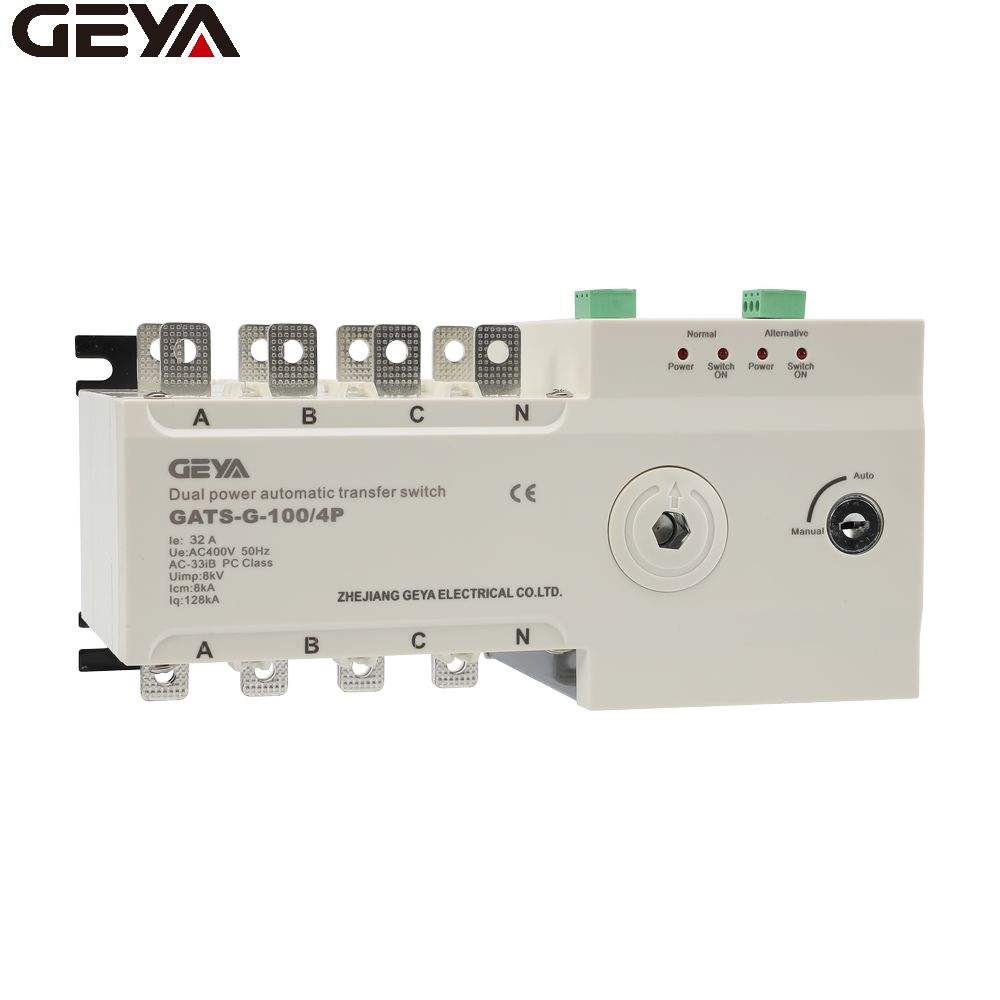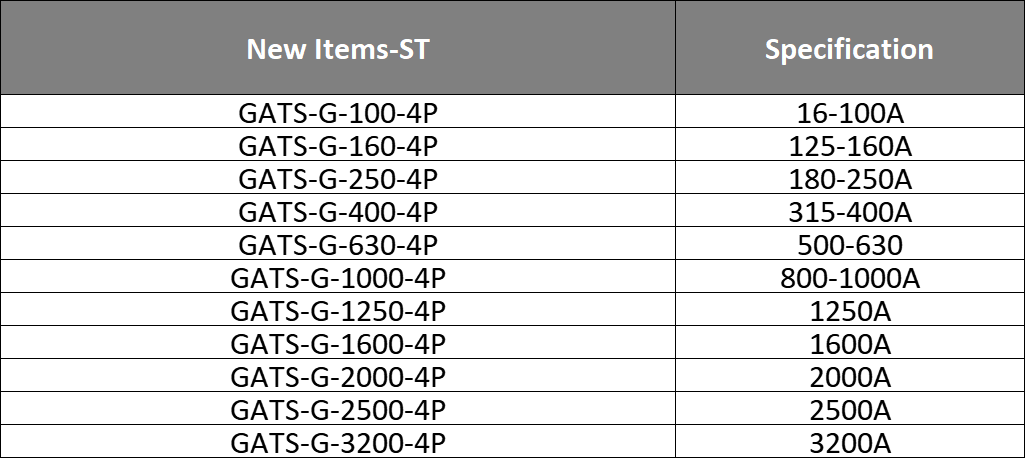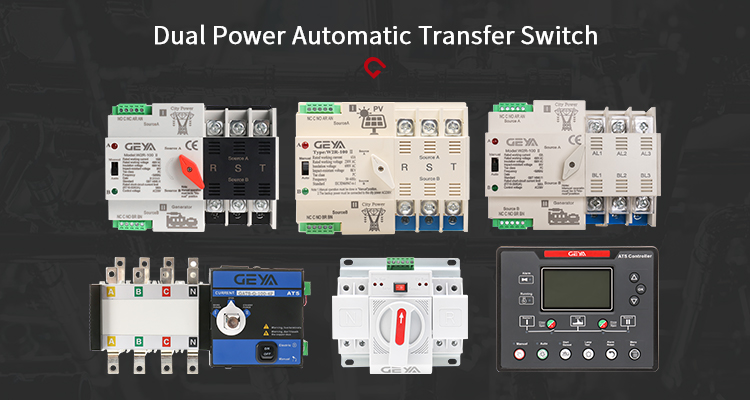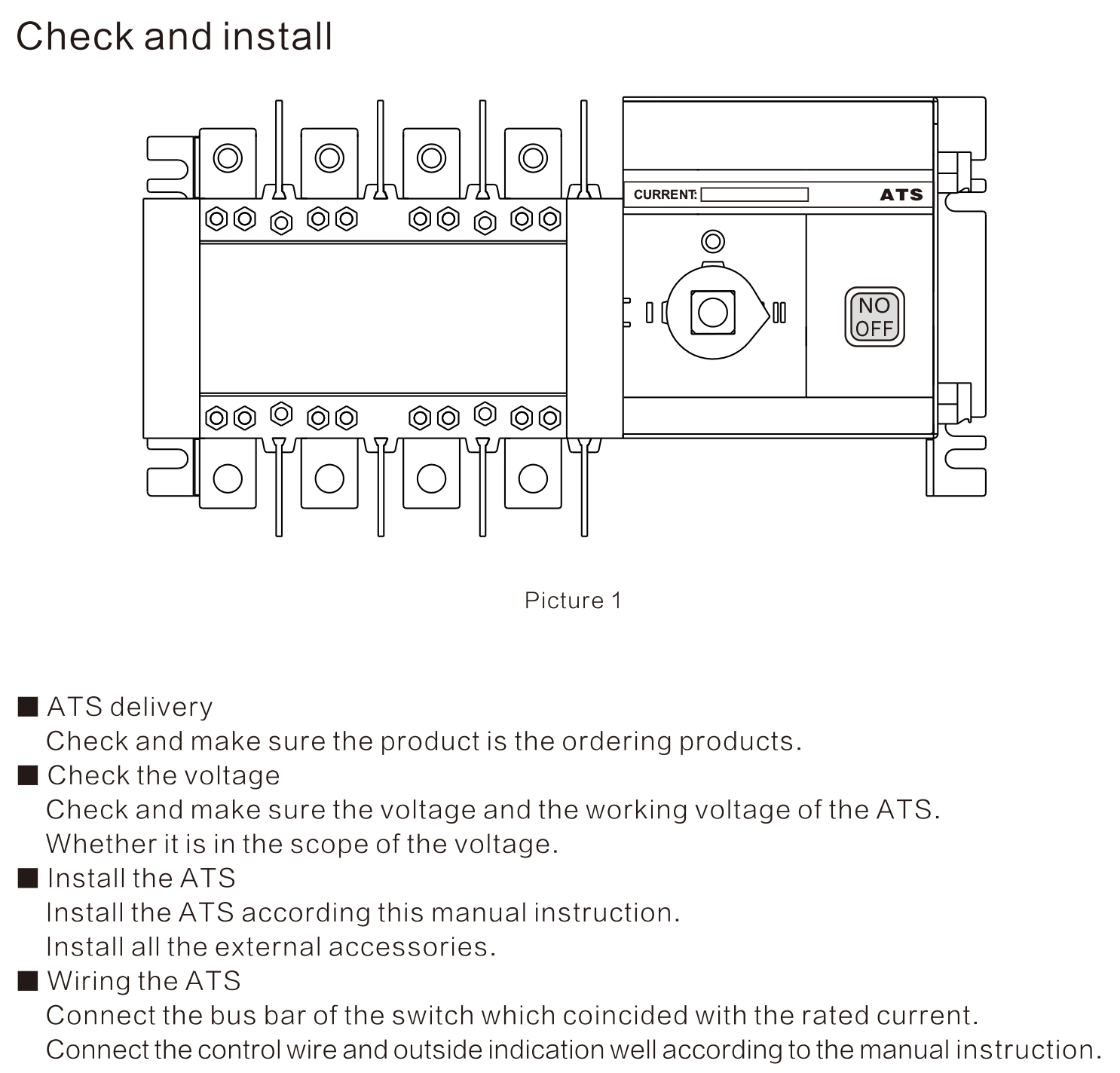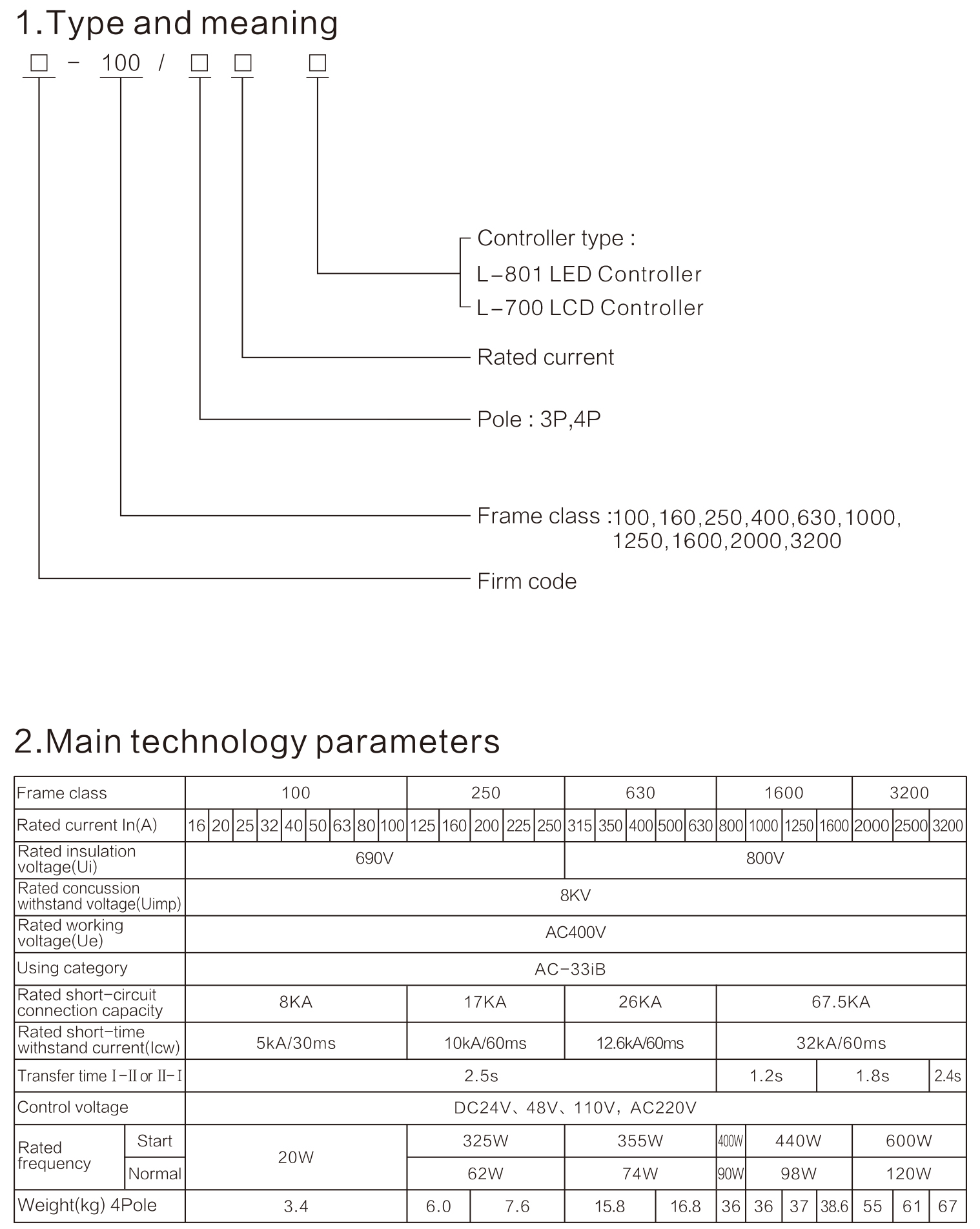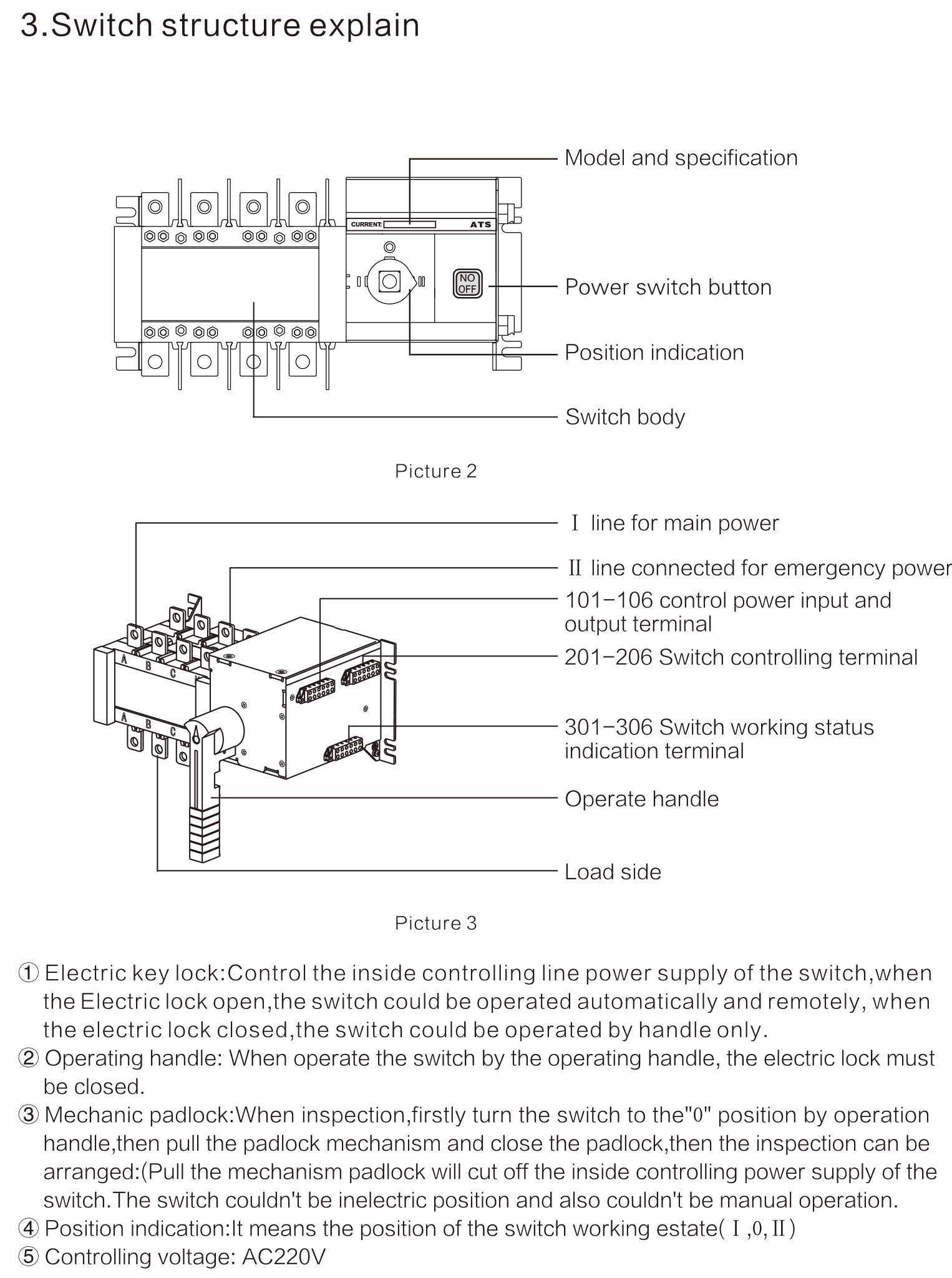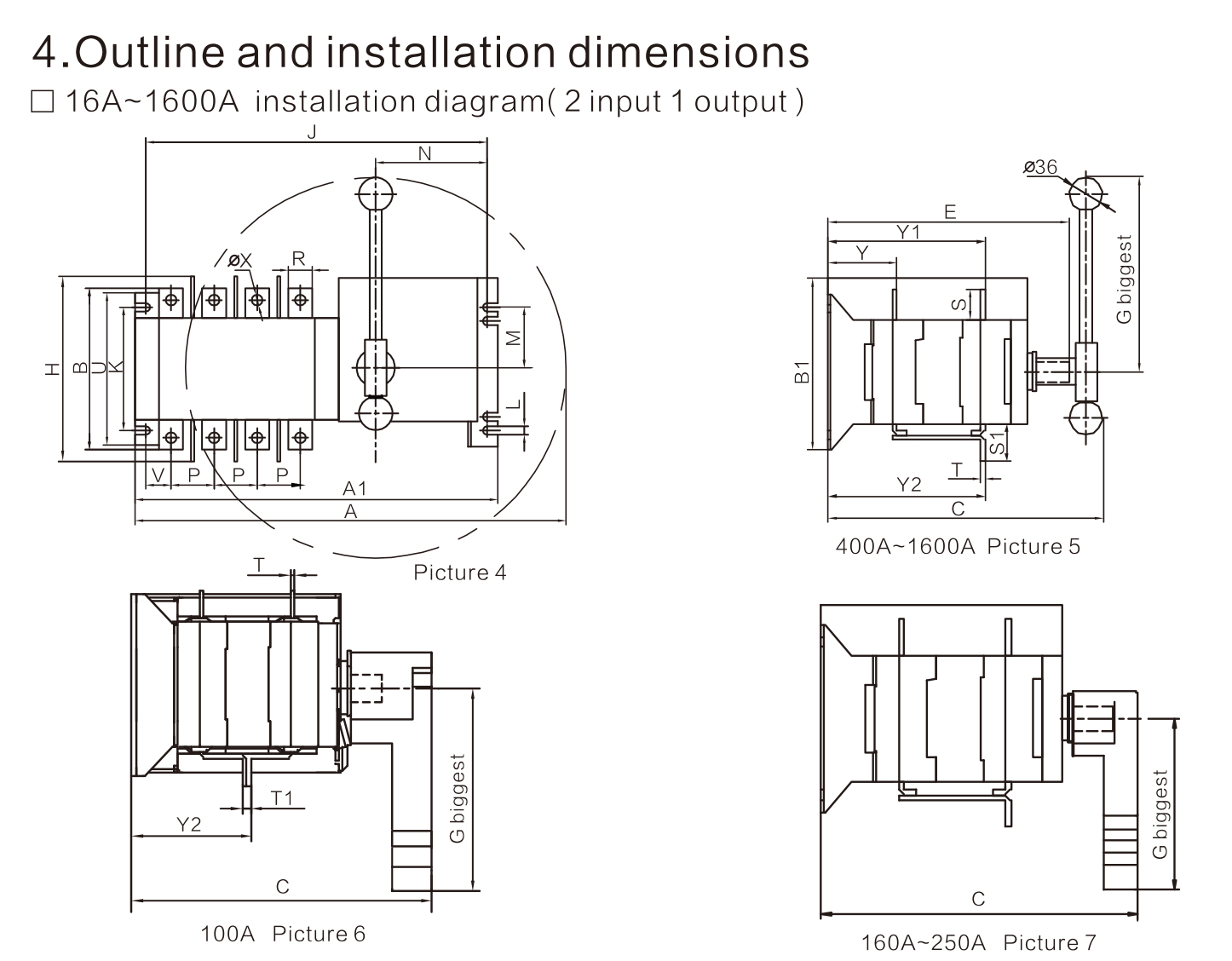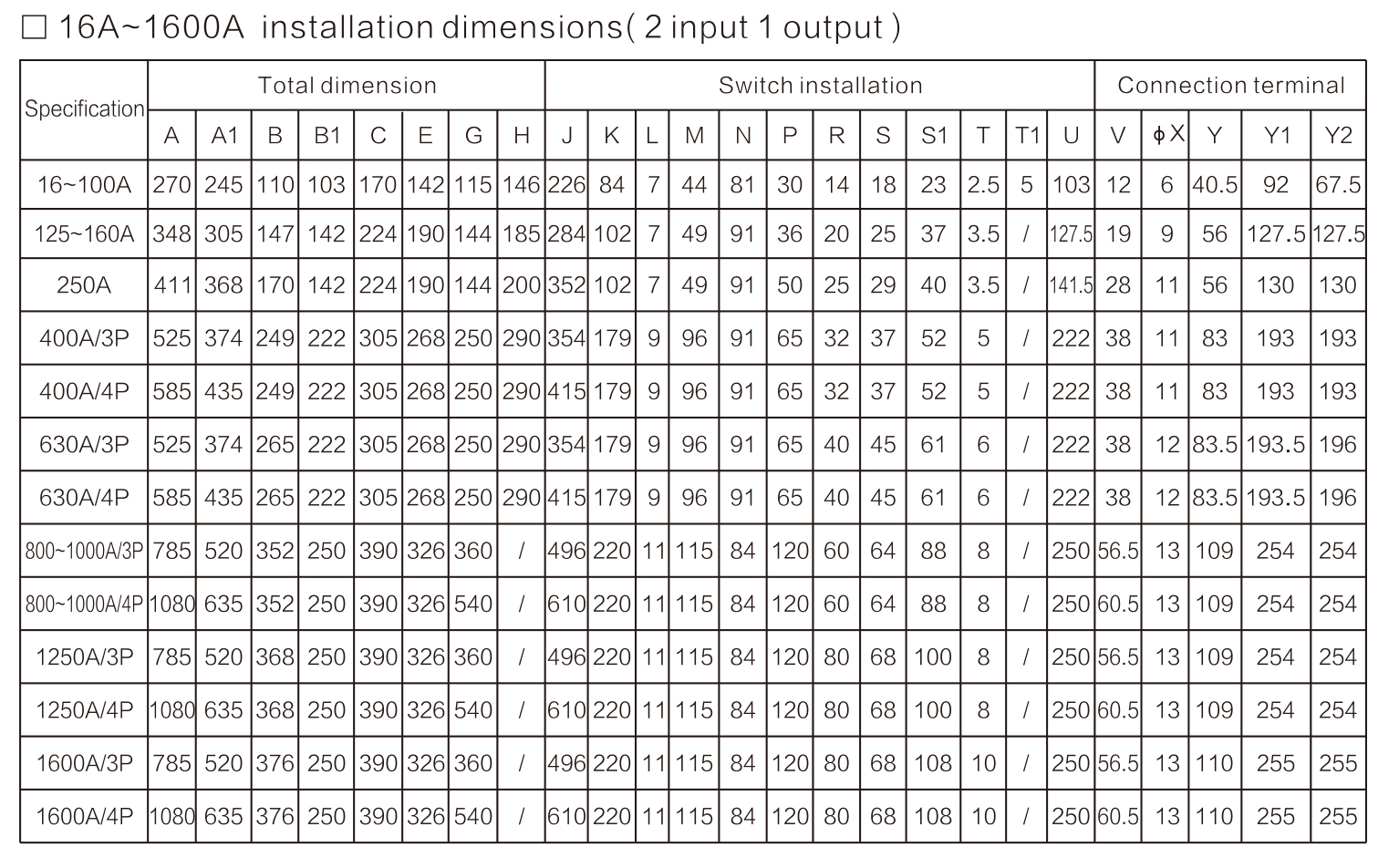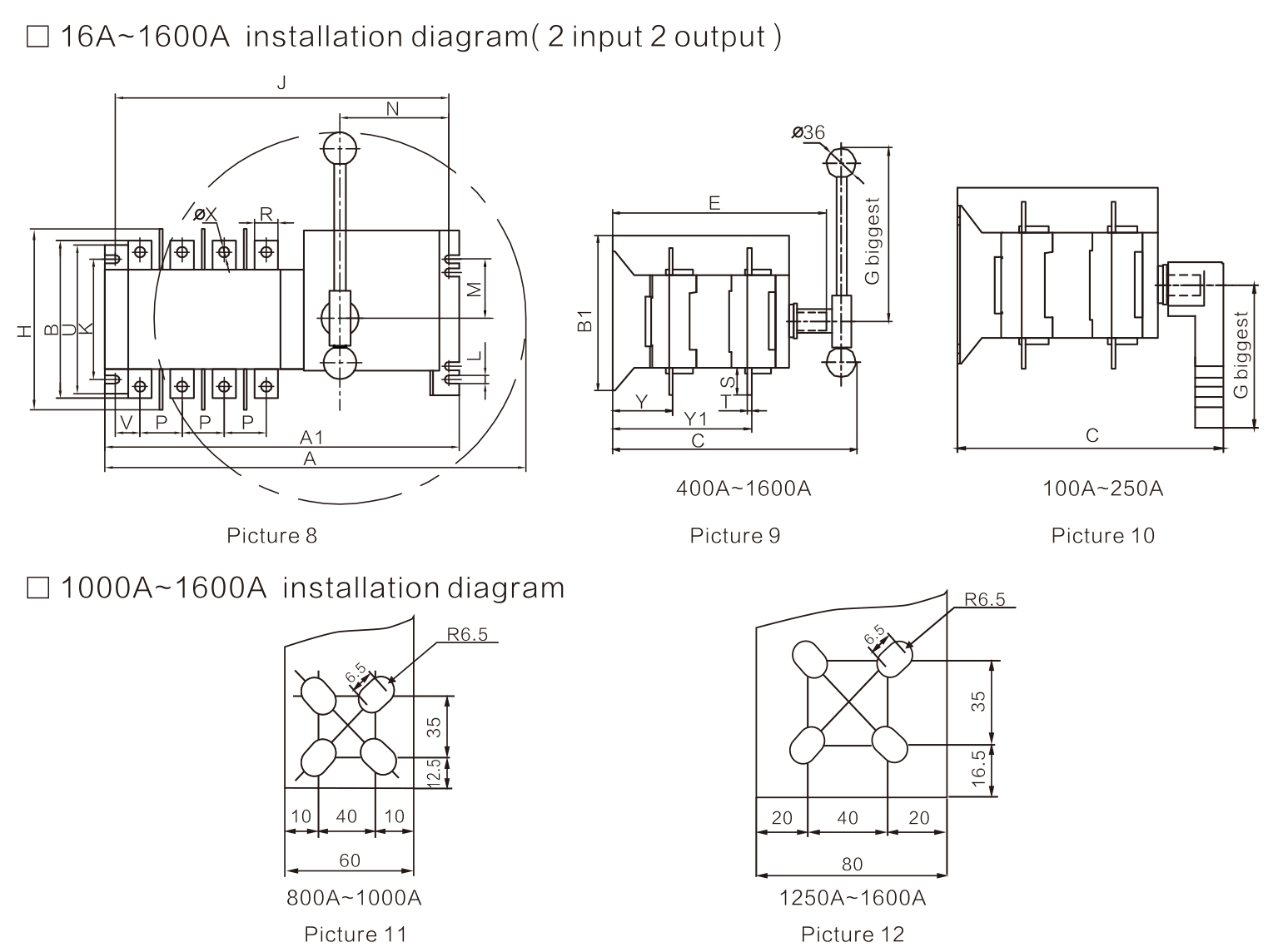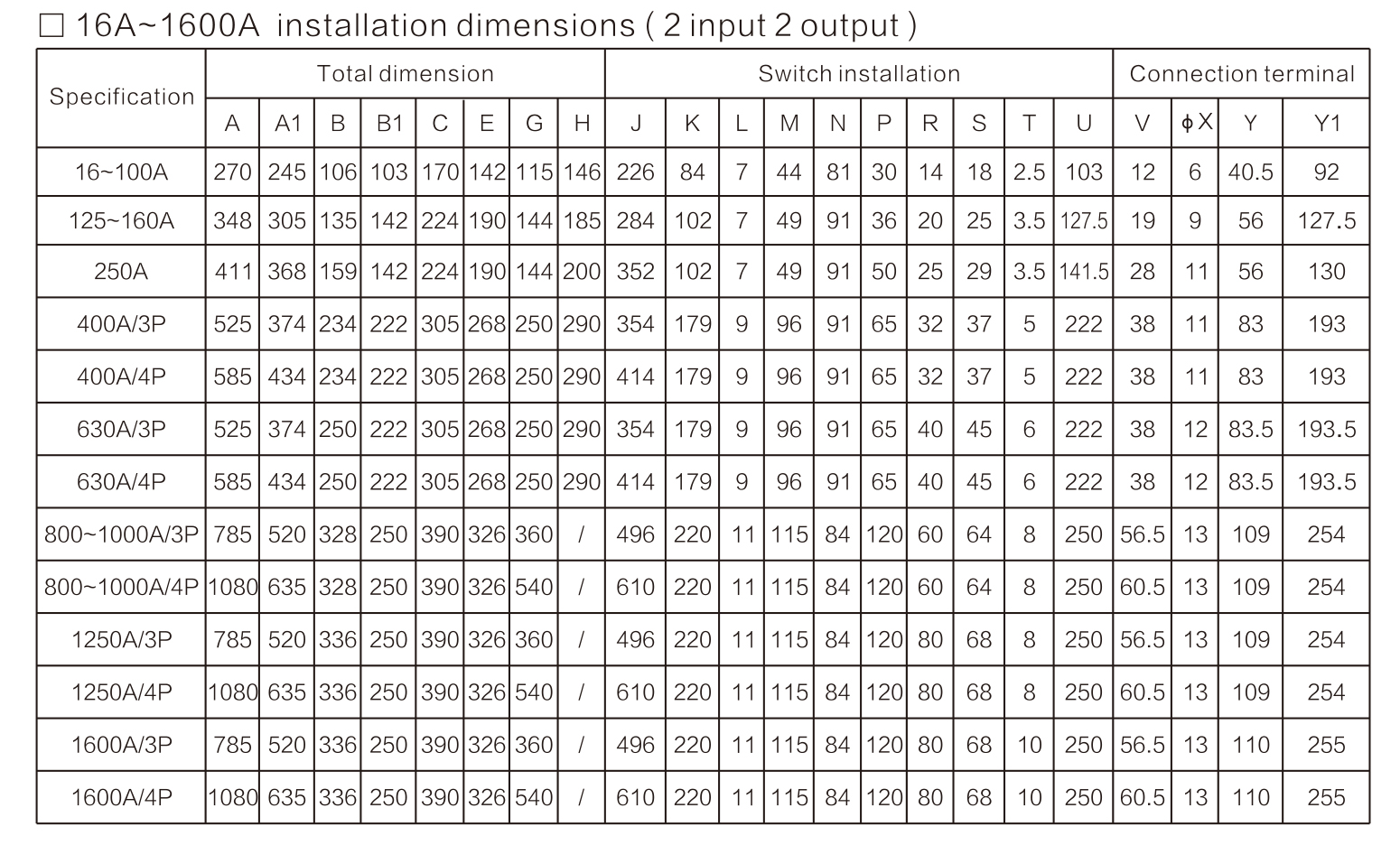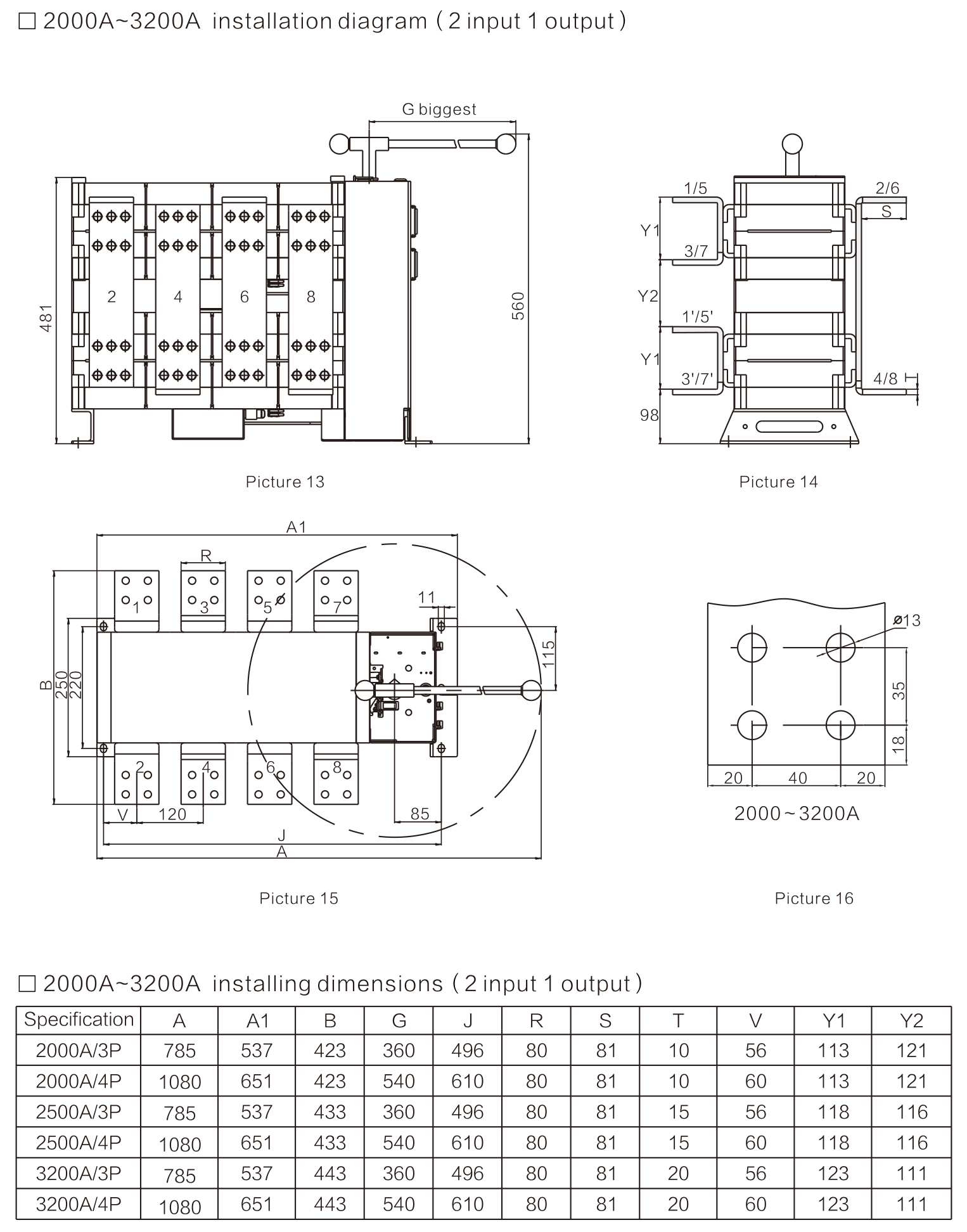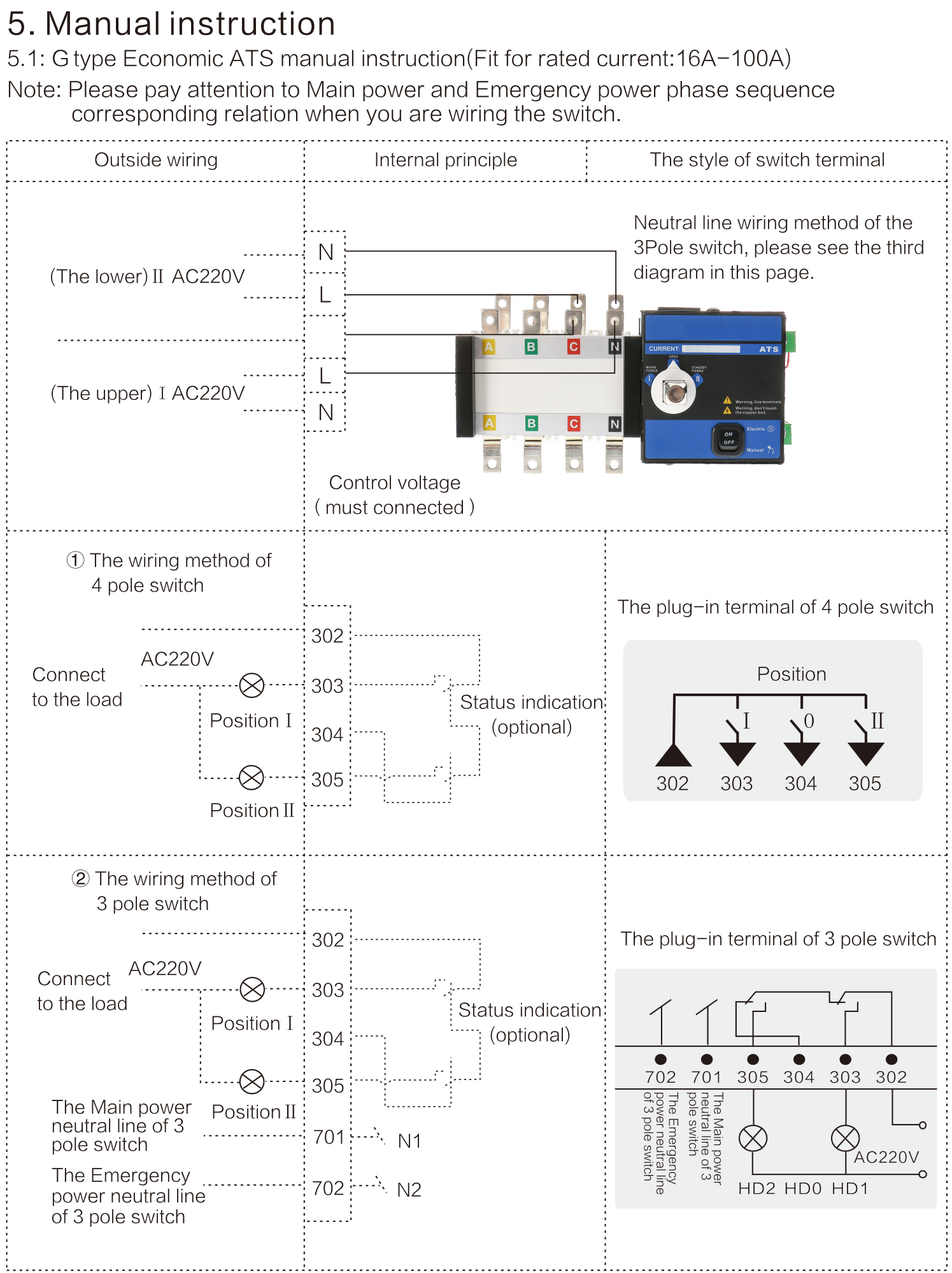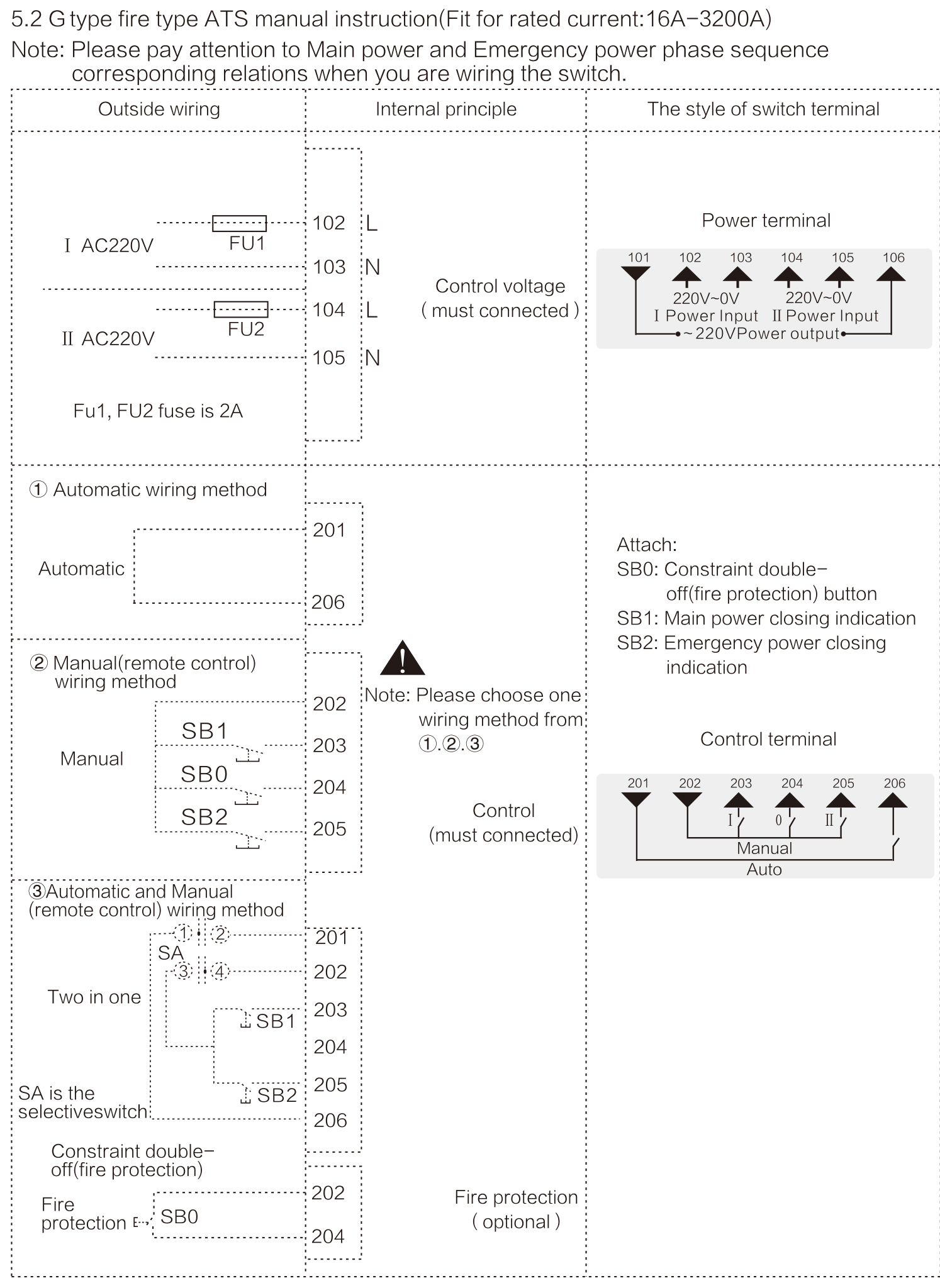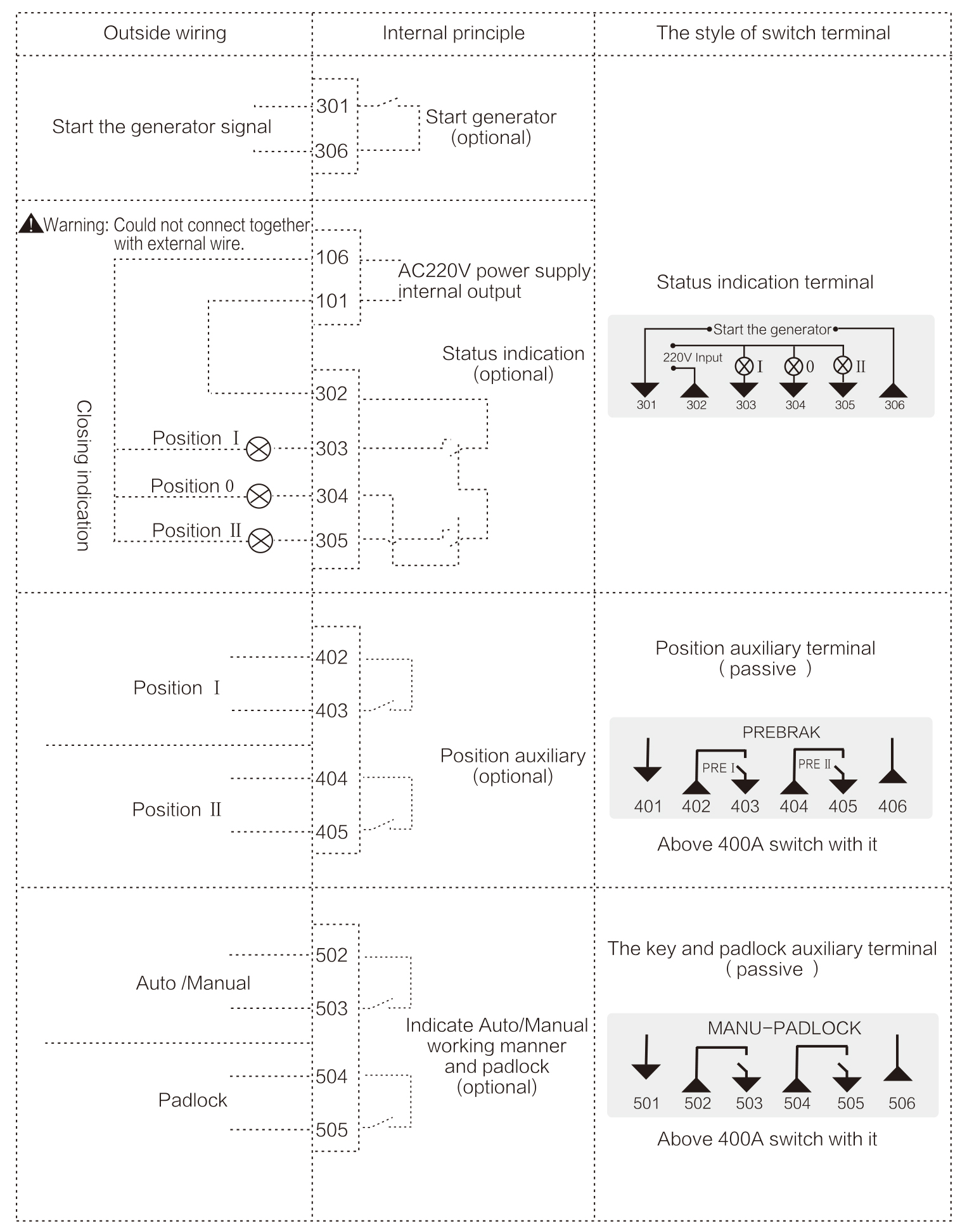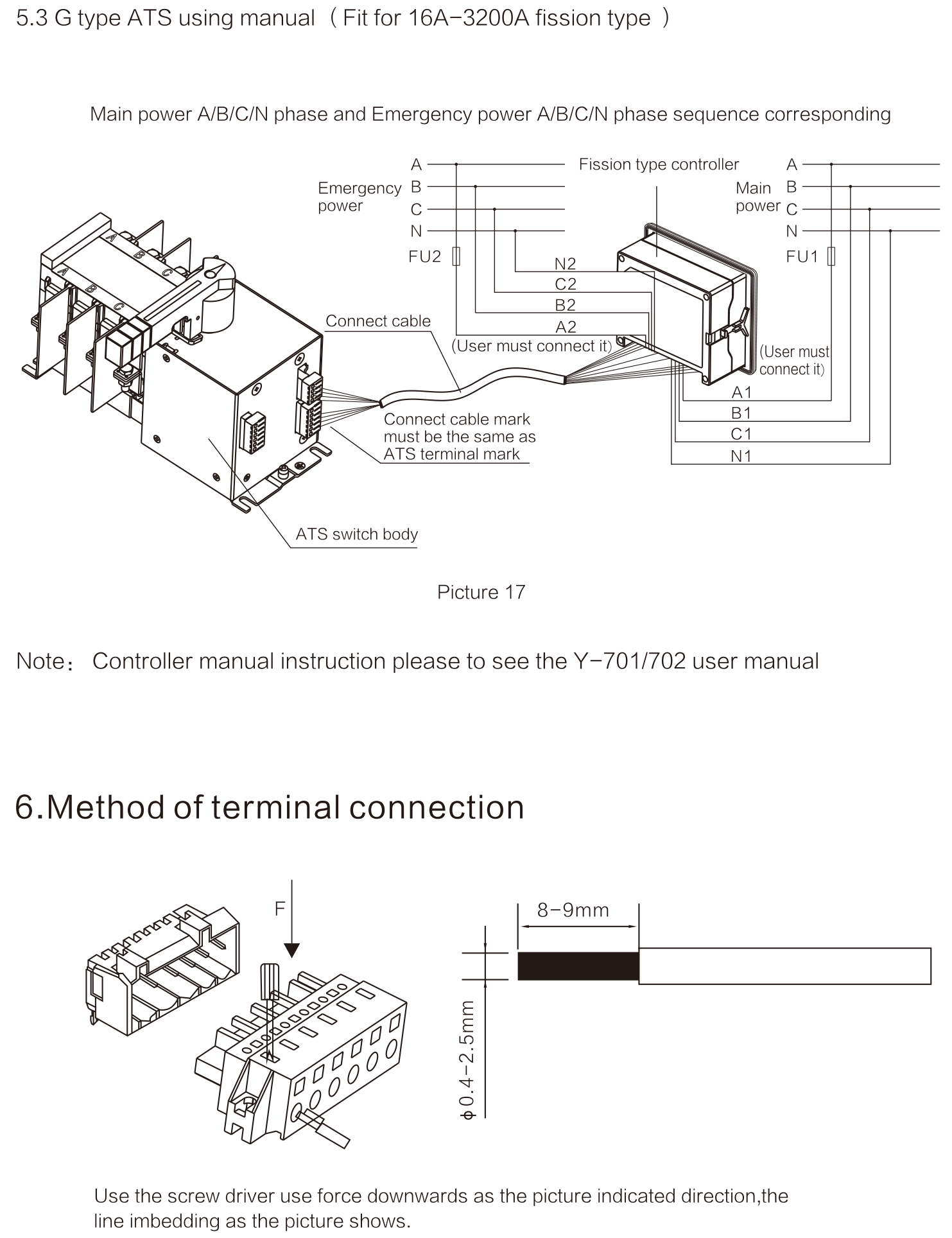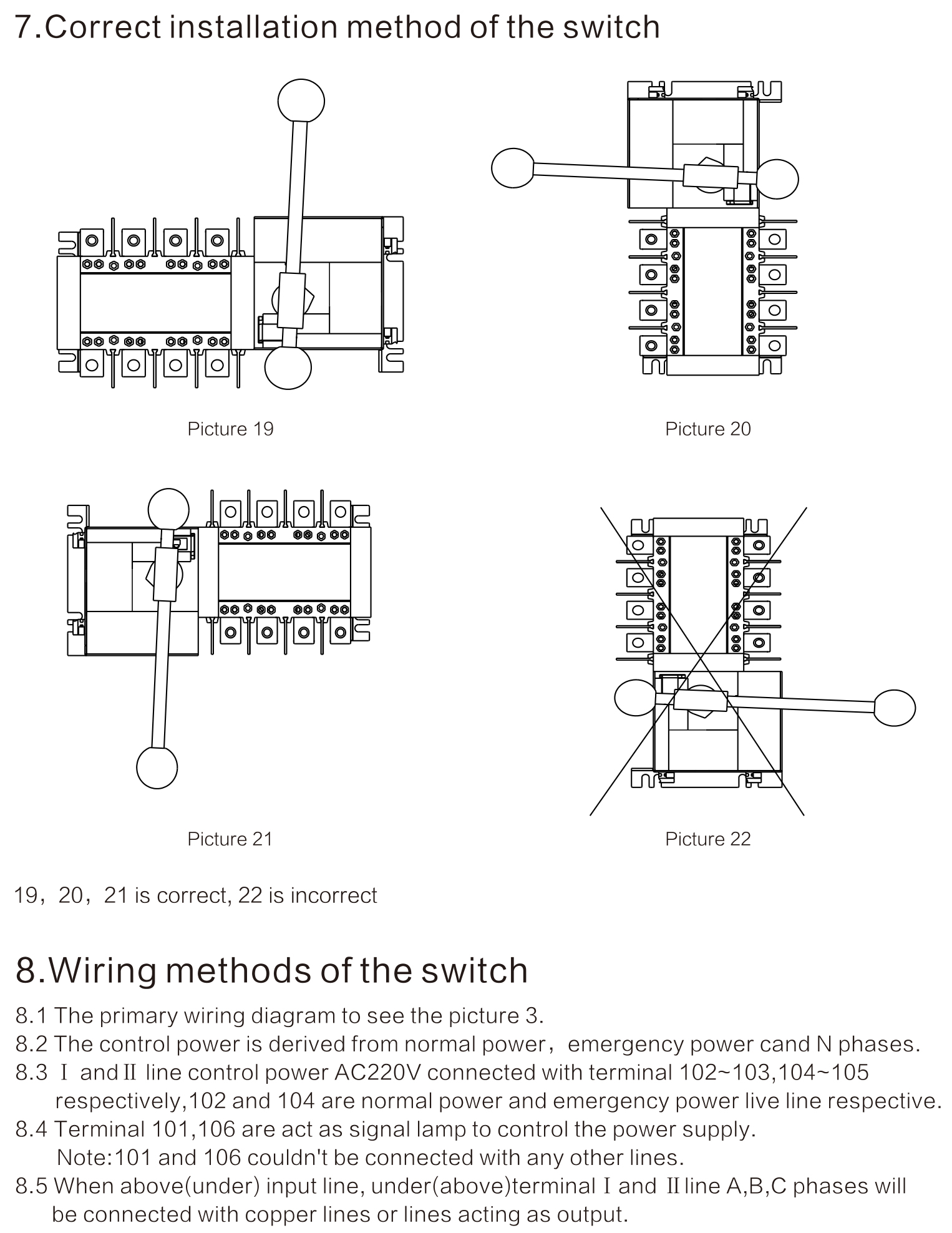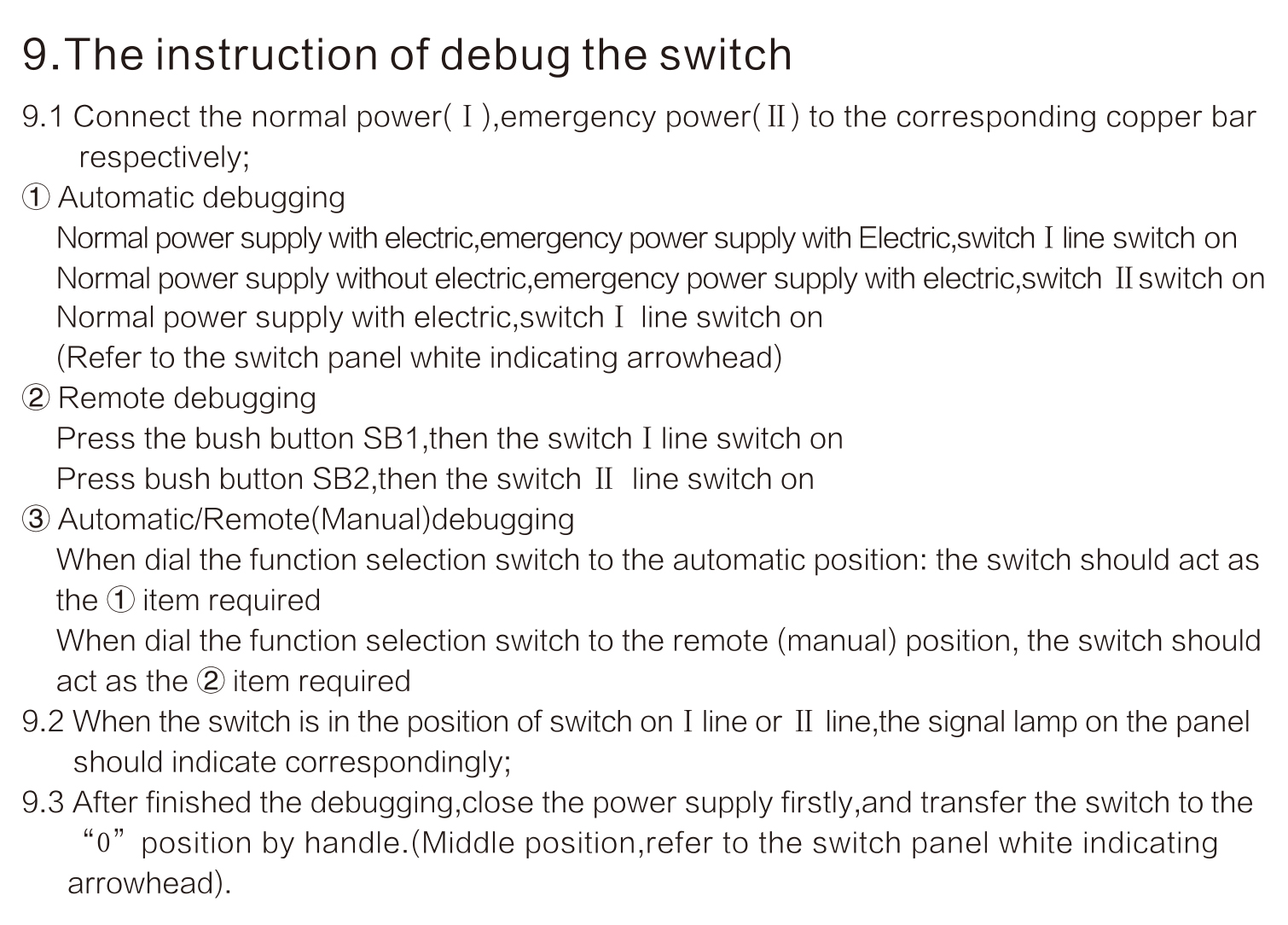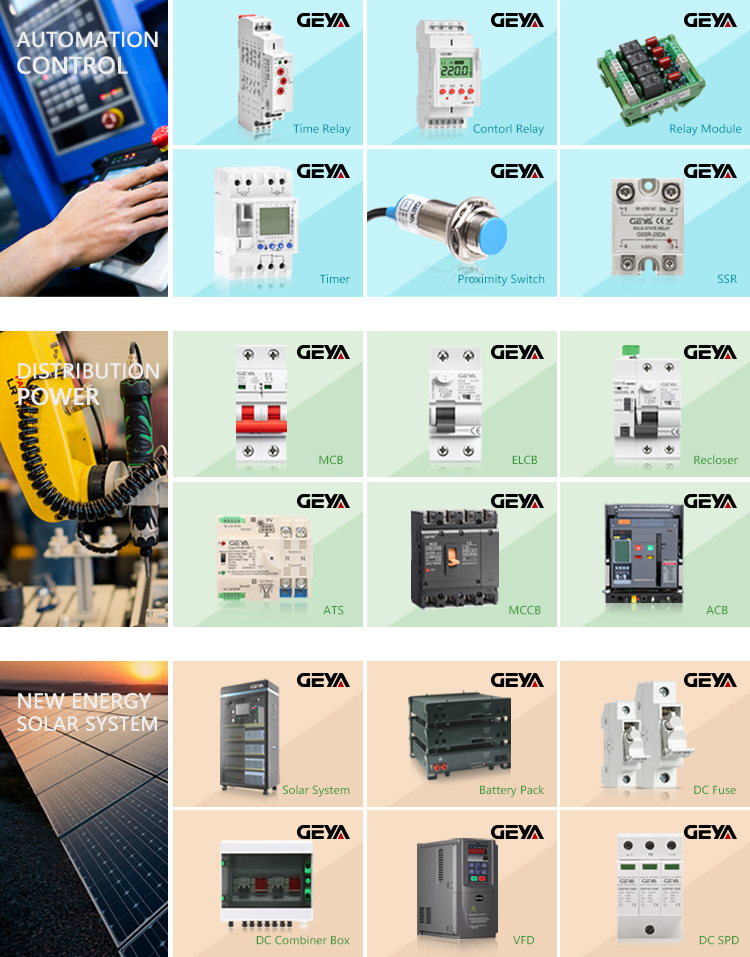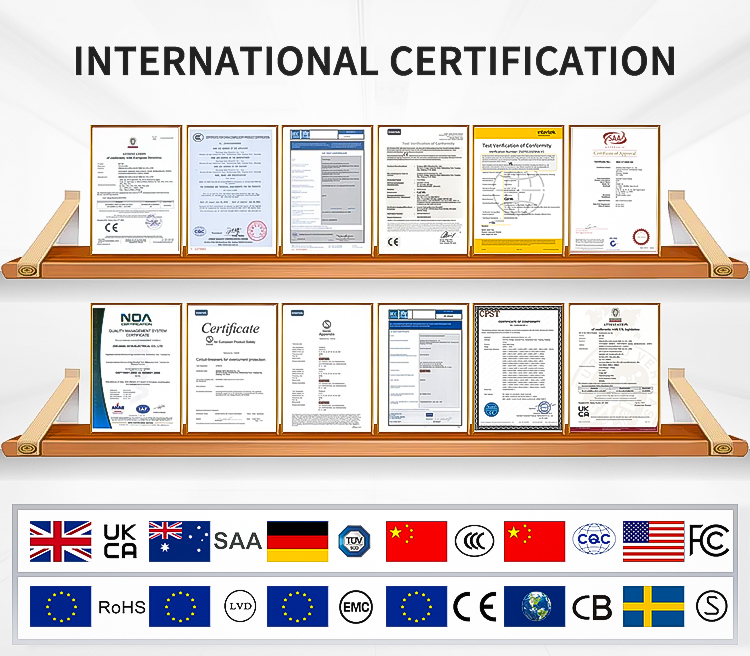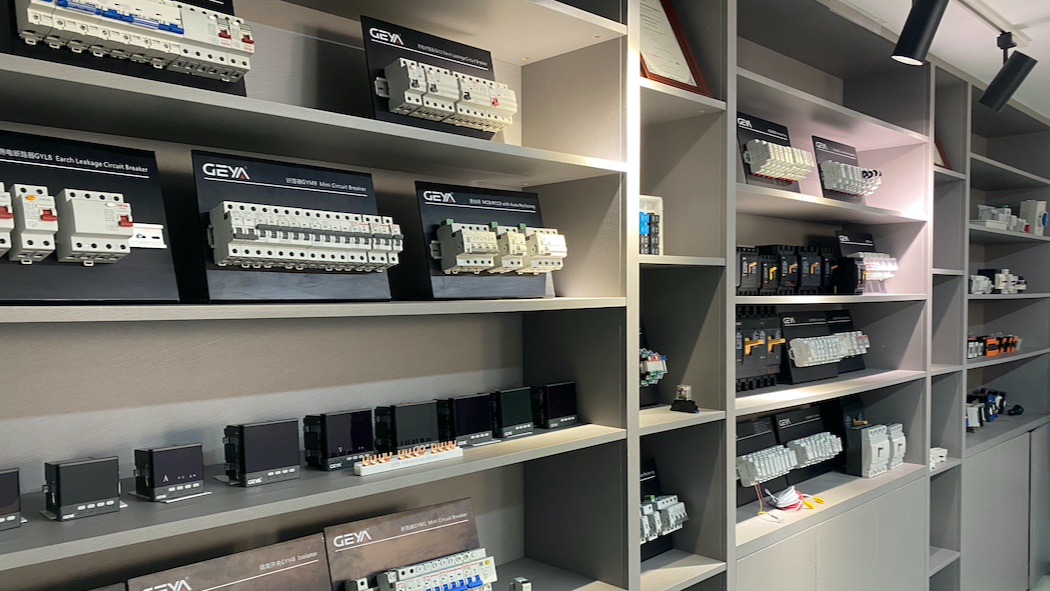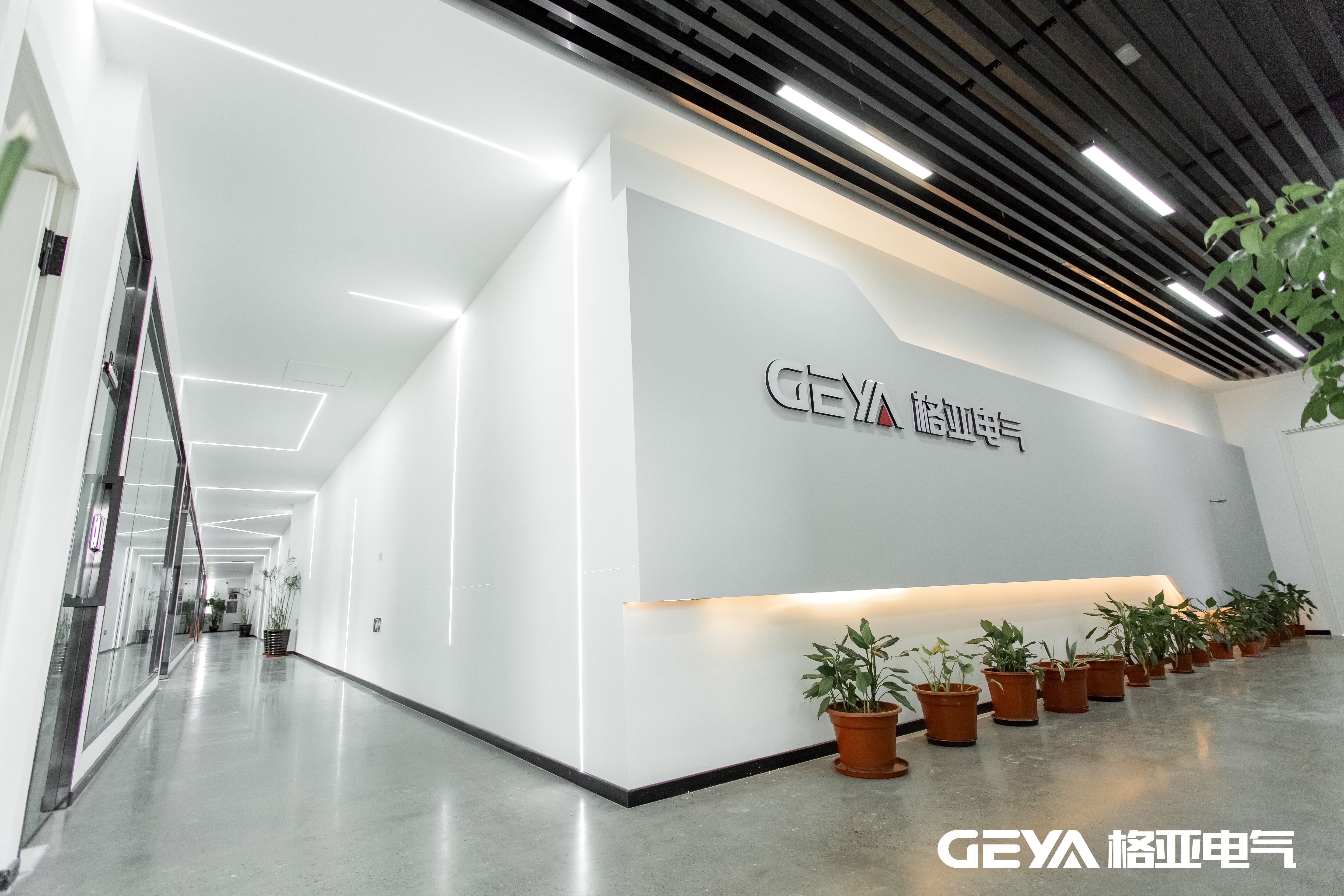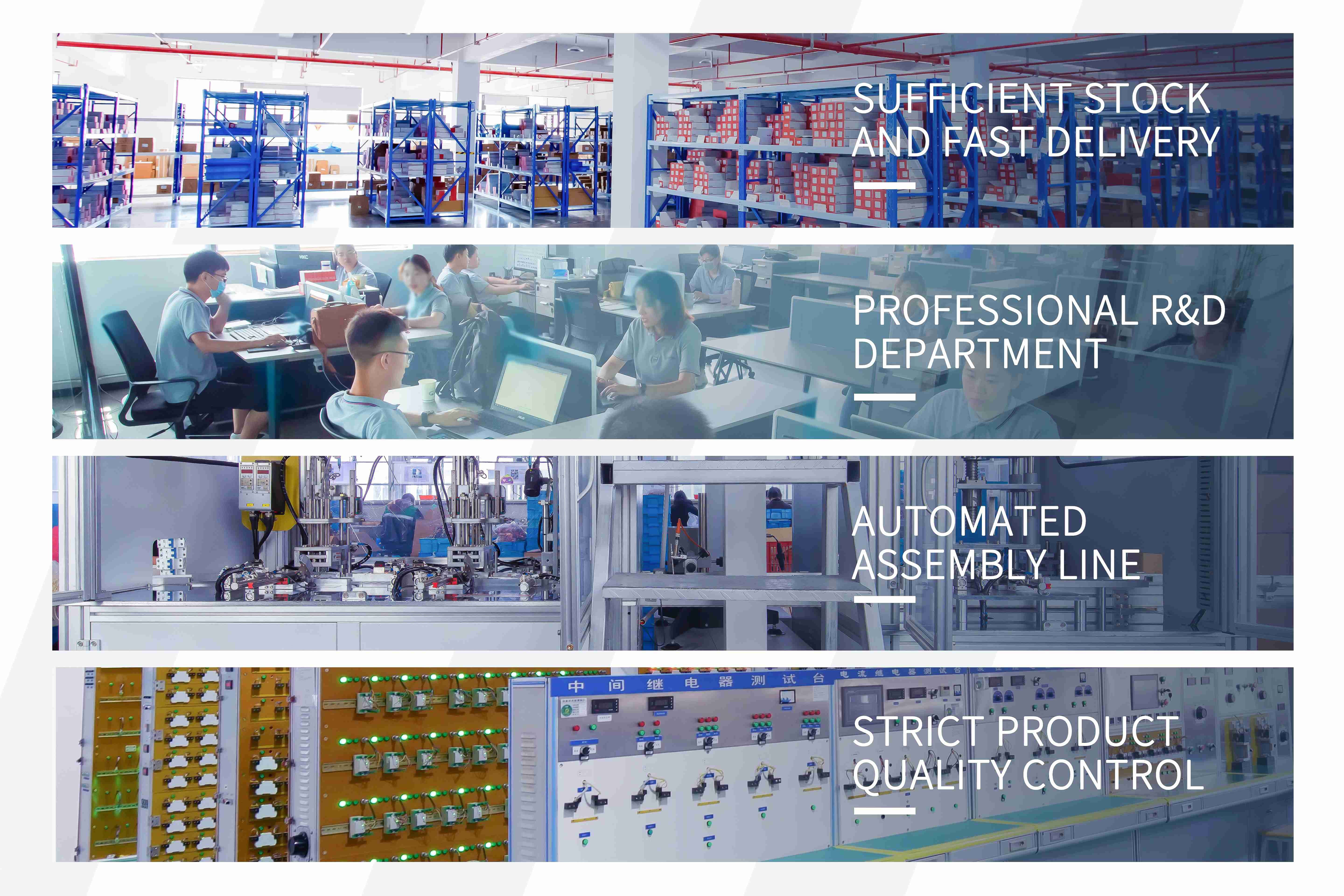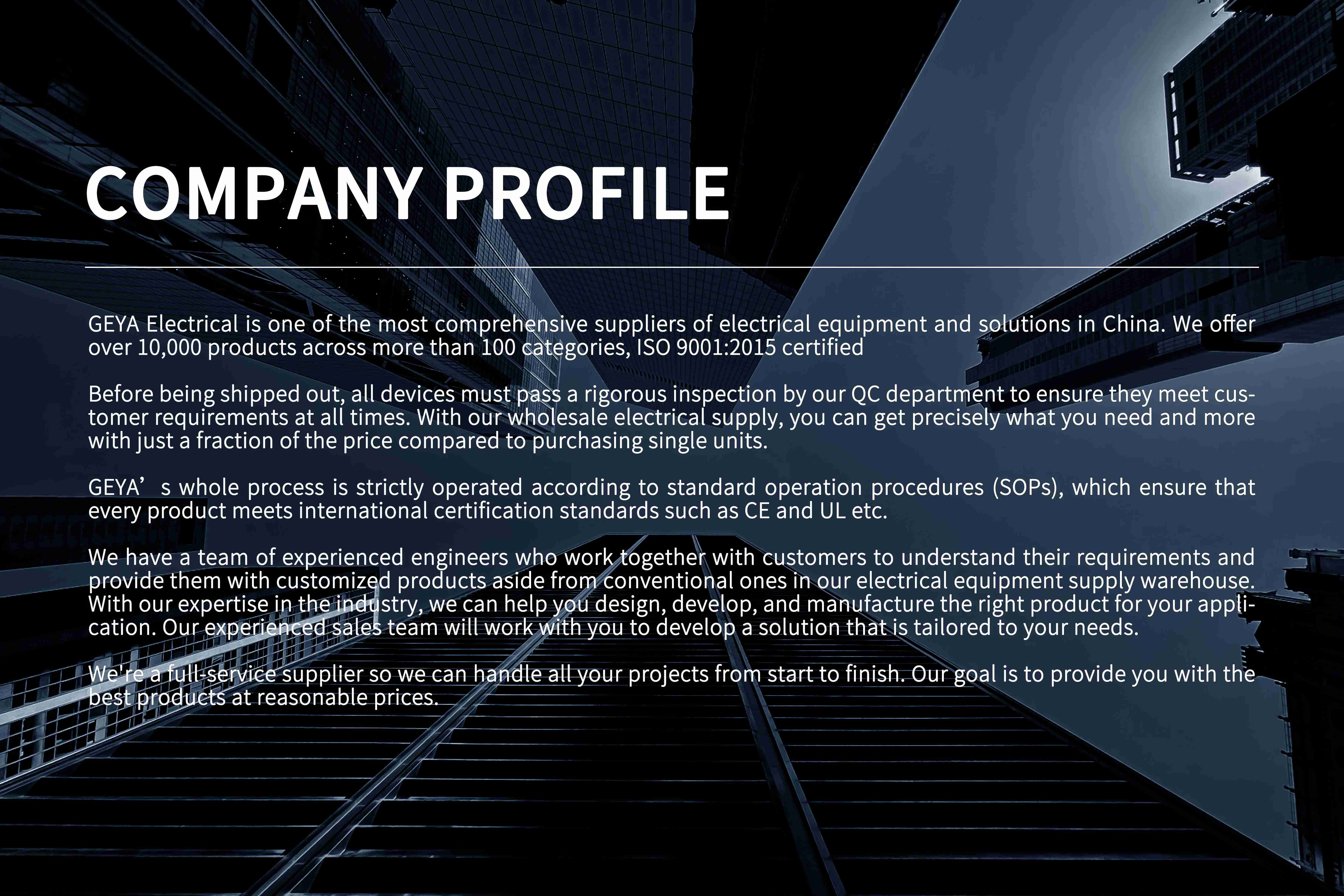How does an automatic transfer switch(ATS) work
An automatic transfer switch (ATS) is a self-acting, intelligent power switching device governed by the dedicated control logic.
The principal purpose of an ATS is to make sure the continual delivery of electric power from one among two power sources to a
connected load circuit (electrical equipment – lights, motors, computers, etc.).
The control logic or automatic controller is usually microprocessor-based and constantly monitors the electrical parameters
(voltage, frequency) of primary and alternate power sources. Upon failure of the connected power source, the ATS will
automatically transfer (switch) the load circuit to the other power source (if it’s available). As a general rule, most automatic
transfer switches seek connection to the primary power source (utility) by default and can only connect with the alternate power
source (engine-generator, backup utility) when required (primary source failure) or requested to do so (operator command).
Automatic transfer switch(ATS) working principle
An ATS can control when a backup generator depends on the voltage within the primary supply for a building. once they do that they
need to also transfer the load to the backup generator. They work by blocking the backup generator from becoming a source of
electric power until the generator itself is on for temporary power.
One example of a step-by-step process an ATS may use is:
(1)When the electric power during a building goes out, the ATS starts the backup generator. This causes the generator to ready
itself to provide electric power to the house.
(2)When the generator is prepared to perform, the ATS switches the emergency power to the load.
(3)The ATS then commands the generator to shut down when the utility power is restored.
When power fails, the automatic transfer switch commands the generator to start. When the generator is prepared to provide power,
the ATS switches emergency power to the load. Once utility power is restored ATS switches to utility power and commands generator
shutdown.
If your house had an ATS that controlled a backup generator, the ATS would start the generator when a power outage occurred and
therefore the backup generator would begin to provide power. Engineers generally design houses and transfer switches such that the
generator remains become independent from the system that distributes power throughout the building. This protects the generator
from overloading. Another protective measure that engineers use is that they need “cool down” times to forestall the generator
from overheating.
ATS designs sometimes allow for load shedding or changing the priority of other circuits. this enables the electricity and power
to circulate in ways in which are more optimal or useful for the needs of the building. These options can come in handy to
forestall generators, motor controller circuit boards, and other components from overheating or overloading with electricity.
Soft loading could be a method that lets the load transfer from the utility to the synchronized generators more easily, which may
also minimize voltage loss during these transfers.
Automatic transfer switch(ATS)
Low-voltage automatic transfer switch assemblies provide a reliable means of transferring essential load connections between
primary and alternate sources of electric power. Data centers, hospitals, factories, and a good range of other facility types that
need continuous or near-continuous uptime typically utilize an emergency (alternate) power source like a generator or a backup
utility feed when their normal (primary) power source becomes unavailable.
Generator automatic transfer switch(ATS) installation
Power stations use enclosed circuit breakers similar to houses do for his or her needs. Research or equipment that places
confidence in continuous power use Automatic Transfer Switches in additional complicated arrangements to satisfy their unique
needs. The generator automatic switch installation process must use these arrangements to meet the individual needs of households
and buildings.
Electrical engineers can create these designs for the facilities themselves and make control rooms for his or her different
purposes like in hospitals or data centers. These could even be utilized in emergency lights that point individuals to exits when
necessary, hazardous ventilation to get rid of toxic chemicals from rooms, and even alarms when monitoring facilities for fires.
The way these automatic switch designs work can involve alarms that signal powerlessness. This commands the automatic transfer
switches to start up the backup generators, and, after detecting that they’ve started, the setups distribute power across the
building when designing the generator automatic transfer switch installation.
Automatic transfer switch(ATS) for generator
The completely automatic transfer switch monitors incoming voltage from the utility line, round the clock.
When utility power is interrupted, the automatic transfer switch immediately senses the matter and signals the generator to start.
Once the generator is running at the proper speed, the automatic transfer switch safely shuts off the utility line and
simultaneously opens the generator power line from the generator.
Within seconds, your generator system begins supplying electricity to the critical emergency circuits of your home or business.
The transfer switch continues to watch the utility line conditions.
When the automatic transfer switch senses the utility line voltage has returned at a steady-state, it re-transfers the electrical
load back to the utility line and resumes monitoring for subsequent utility loss. The generator will still run for an engine
cool-down period of several minutes while the whole system stands ready for the subsequent power outage.
Interlock vs automatic transfer switch
These two devices work the same. However, their operability is different. Their applications are also various. With an interlock
being used in residential applications and places with less frequent power outages, an automatic switch is mainly commercial and
in those vast apartments. You need an automatic switch if you prefer having a fully automated system requiring no supervision.
It’s also ideal for commercial or industrial applications needing continuous power. You need one of these devices in your home if
you have a backup power generator. It’s also a requirement for any commercial building to have backup power with a transfer
switch.
